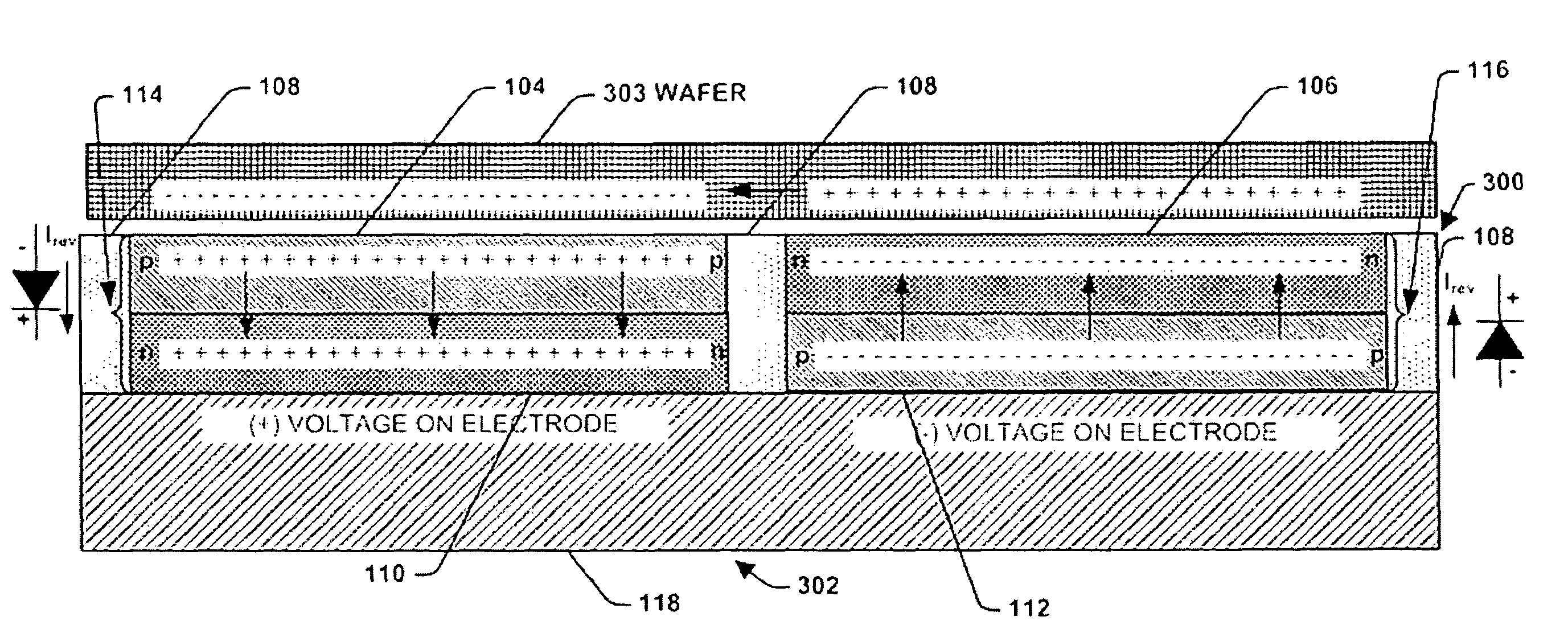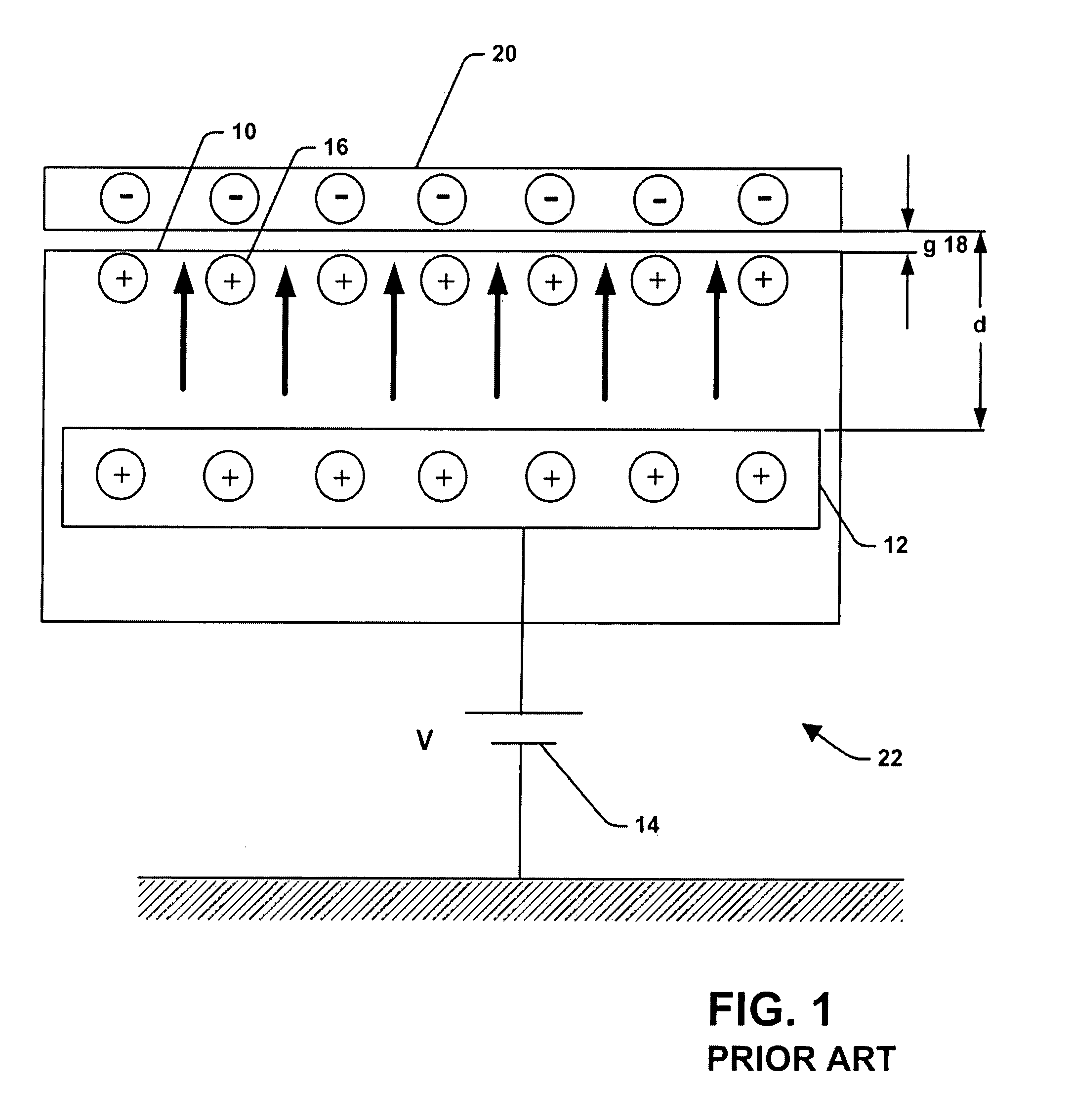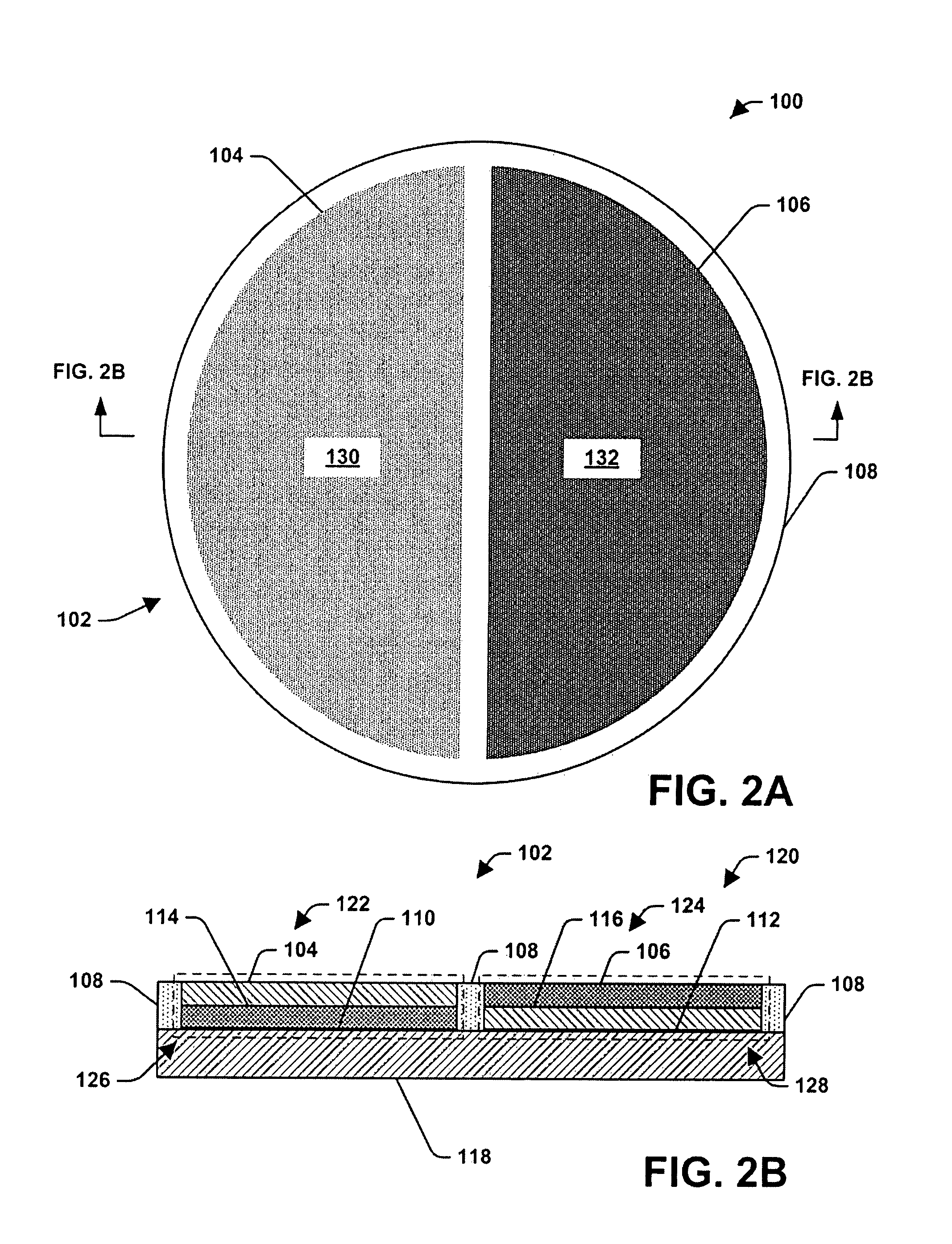Low-cost electrostatic clamp with fast de-clamp time
a technology of electrostatic clamping and low-cost, which is applied in the direction of electrical equipment, semiconductor devices, and semiconductor/solid-state device details, etc. it can solve the problems of reducing the throughput of the wafer manufacturing process, jr clamps take much longer to de-clamp, typically 10 seconds or greater, and the backside of the wafer would suffer excessive particle contamination, etc., to achieve convenient use, convenient de-clamp, and the effect of reducing the throughput of the wa
- Summary
- Abstract
- Description
- Claims
- Application Information
AI Technical Summary
Benefits of technology
Problems solved by technology
Method used
Image
Examples
Embodiment Construction
[0037]The present invention is directed towards a system and a method for clamping and de-clamping a wafer utilizing an electrostatic clamp (ESC) manufactured utilizing existing wafers. Accordingly, the present invention will now be described with reference to the drawings, wherein like reference numerals are used to refer to like elements throughout. It should be understood that the description of these aspects are merely illustrative and that they should not be taken in a limiting sense. In the following description, for purposes of explanation, numerous specific details are set forth in order to provide a thorough understanding of the present invention. It will be evident to one skilled in the art, however, that the present invention may be practiced without these specific details.
[0038]The present invention overcomes challenges of the prior art by providing a low cost and high precision system and method for clamping and de-clamping a wafer (e.g., a semiconductor substrate) and ...
PUM
 Login to View More
Login to View More Abstract
Description
Claims
Application Information
 Login to View More
Login to View More - R&D
- Intellectual Property
- Life Sciences
- Materials
- Tech Scout
- Unparalleled Data Quality
- Higher Quality Content
- 60% Fewer Hallucinations
Browse by: Latest US Patents, China's latest patents, Technical Efficacy Thesaurus, Application Domain, Technology Topic, Popular Technical Reports.
© 2025 PatSnap. All rights reserved.Legal|Privacy policy|Modern Slavery Act Transparency Statement|Sitemap|About US| Contact US: help@patsnap.com



